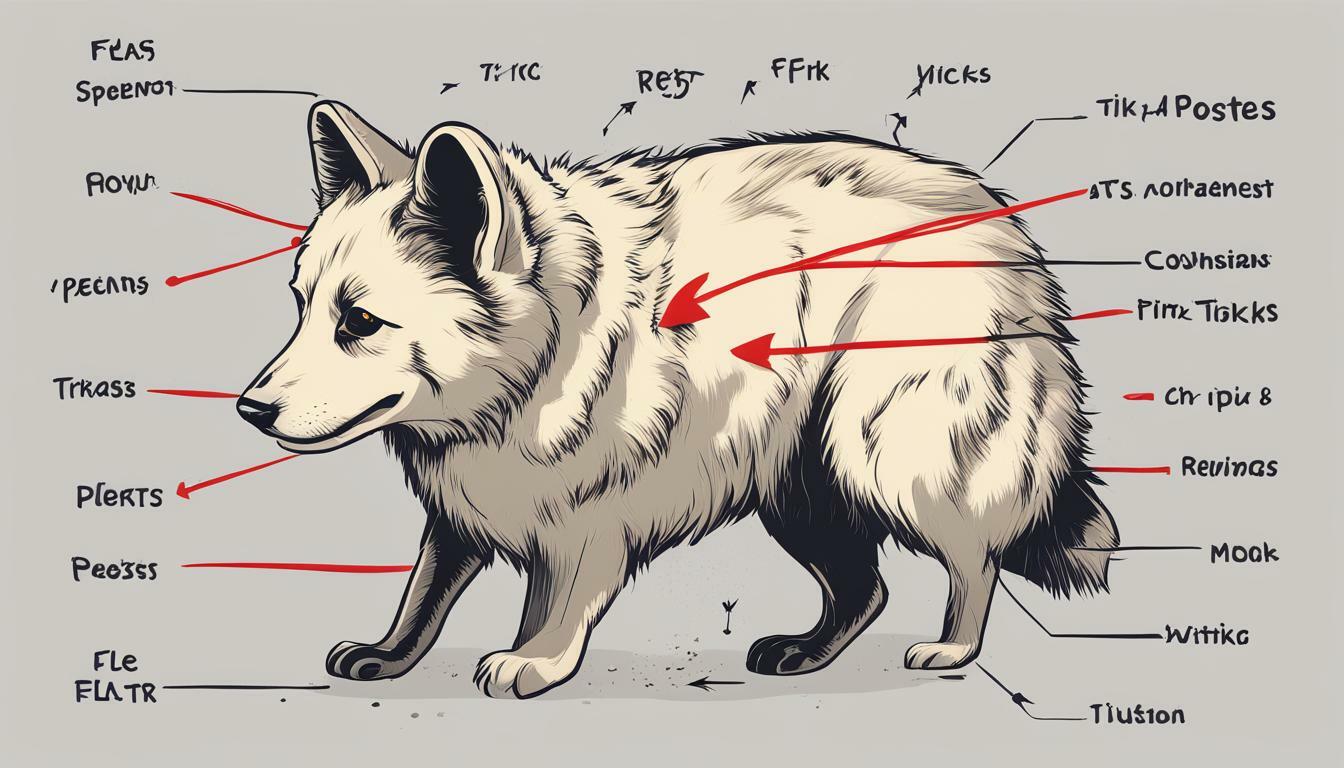
As a professional journalist specializing in pet health and pest control, I often receive questions from pet owners about how to control fleas and ticks. One of the most effective methods is through topical flea and tick treatment, which is applied directly to your pet’s skin. In this section, we will explore the science behind topical flea and tick treatment and how it can help keep your furry friends healthy and happy.
Key Takeaways:
- Topical flea and tick treatment is an effective pest control method.
- It is directly applied to your pet’s skin.
- Effective pest control is essential for maintaining your pet’s health and well-being.
Understanding Topical Flea and Tick Treatment
When it comes to maintaining the health of our furry friends, effective pest control is a crucial component. Topical flea and tick treatments are widely used for preventing and controlling these pesky parasites. But how do these treatments work, and what are their active ingredients?
Topical treatments are applied directly to the skin of your pet, typically at the back of their neck. They come in various forms, including spot-ons, sprays, and shampoos. These treatments are designed to be absorbed into the skin, where they remain active for several weeks, providing ongoing protection against fleas and ticks.
The active ingredients in these treatments work by disrupting the life cycle of fleas and ticks. Some of these ingredients include insect growth regulators (IGRs), which prevent flea eggs from hatching, and adulticides, which kill adult fleas and ticks on contact. Other ingredients, such as repellents, help to repel these pests and prevent them from attaching to your pet’s skin in the first place.
It’s important to note that not all topical treatments are created equal, and it’s essential to consult with your veterinarian to determine which product is best for your pet’s specific needs. Additionally, it’s crucial to follow the instructions carefully when applying these treatments to ensure their effectiveness and avoid any potential adverse reactions.
Overall, topical flea and tick treatments are a highly effective way to maintain your pet’s health and prevent these pests from causing harm. By understanding the mechanism and active ingredients of these treatments, pet owners can make informed decisions to protect their furry friends from these annoying and potentially dangerous parasites.
Application and Absorption of Topical Treatments
Topical flea and tick treatments are applied to the pet’s skin, and the absorption rate varies depending on the active ingredients and the pet’s skin type. The application process involves dividing the fur into small sections and applying the product directly to the skin, usually at the base of the pet’s neck and between the shoulder blades. The product is then distributed along the pet’s skin within a few hours and begins to provide protection against fleas and ticks.
The pet’s skin plays an essential role in the absorption of topical treatments. It is recommended to clean the pet’s skin before application to remove any dirt, oil, or debris that may hinder absorption. Pet owners should also avoid bathing their pets for at least 48 hours before and after applying topical treatments to ensure maximum absorption.
How Topical Treatments Work to Control Fleas and Ticks
When it comes to flea and tick prevention, topical treatments are one of the most effective pest control methods for furry friends. These treatments work by controlling not only adult fleas and ticks but also their eggs and larvae, thereby breaking the pests’ life cycle.
Most topical treatments contain active ingredients such as insect growth regulators (IGRs) that target the pests at different stages of their life cycle. For example, methoprene and pyriproxyfen are two common IGRs that prevent flea eggs and larvae from developing into adults. Other active ingredients, such as fipronil and imidacloprid, work by killing adult fleas and ticks.
Once the topical treatment is applied to the pet’s skin, it starts to spread across the fur and gets absorbed into the skin. The absorption rate will depend on several factors, including the pet’s skin type and how well the treatment is applied.
One key advantage of topical treatments is that they provide a long-lasting solution to flea and tick prevention. Some treatments can last for up to 30 days, meaning less frequent applications are required compared to other types of treatments such as shampoos or sprays.
It is important to note that not all topical treatments are created equal, and pet owners should consult with their veterinarian to determine the best product for their pet’s individual needs. Additionally, it is crucial to follow the recommended application process to ensure the treatment is effective and safe for the pet.
Conclusion
In conclusion, topical flea and tick treatment is an effective method for maintaining pet health and pest control. With active ingredients that target the life cycle of fleas and ticks, these treatments can prevent infestations and reduce the risk of disease transmission. The application process is simple and straightforward, and the absorption rate of these treatments is relatively high.
By understanding how topical treatments work to control fleas and ticks, pet owners can make informed decisions about their furry friends’ healthcare. Regular use of topical treatments can provide long-lasting protection for pets and their surroundings, keeping pests at bay and ensuring a healthy, happy home. Overall, topical flea and tick treatment is an essential component of any pet care routine, and pet owners should prioritize its use for the well-being of their beloved animals.
FAQ
Q: How does topical flea and tick treatment work?
A: Topical flea and tick treatment works by applying a medication directly to your pet’s skin. The active ingredients in the treatment target and kill fleas and ticks, preventing infestations and protecting your furry friend from these pests.
Q: What is the mechanism behind topical flea and tick treatment?
A: Topical treatments for flea and tick prevention contain active ingredients that disrupt the life cycle of fleas and ticks. These ingredients can include insecticides, repellents, and insect growth regulators, which work together to control and prevent infestations.
Q: How are topical treatments applied and absorbed into the pet’s skin?
A: Topical treatments are applied by parting the fur and directly applying the medication to the skin, usually between the shoulder blades or along the back. The medication is absorbed through the skin and distributed throughout your pet’s body, providing long-lasting protection against fleas and ticks.
Q: How effective are topical treatments in controlling fleas and ticks?
A: Topical treatments are highly effective in controlling and preventing flea and tick infestations. They target both adult fleas and ticks, as well as disrupting the life cycle of these pests. Regular and proper application of topical treatments is crucial for maximum effectiveness.
Q: Why are topical flea and tick treatments important for pet health and pest control?
A: Topical flea and tick treatments play a vital role in maintaining pet health and effective pest control. By preventing infestations, these treatments help protect your pet from diseases and irritation caused by fleas and ticks. Additionally, they contribute to keeping your home and surroundings free from these pests.
- Does Flea Treatment Kill Lice? - September 8, 2023
- Does Flea Treatment Kill Mites? - September 8, 2023
- How to Put Flea Treatment on a Dog? - September 8, 2023






